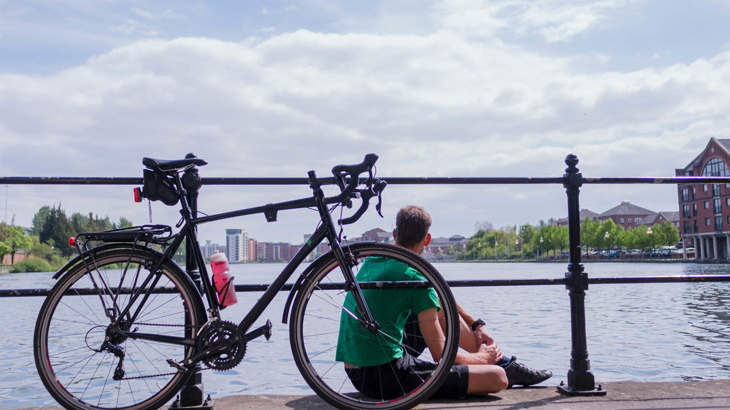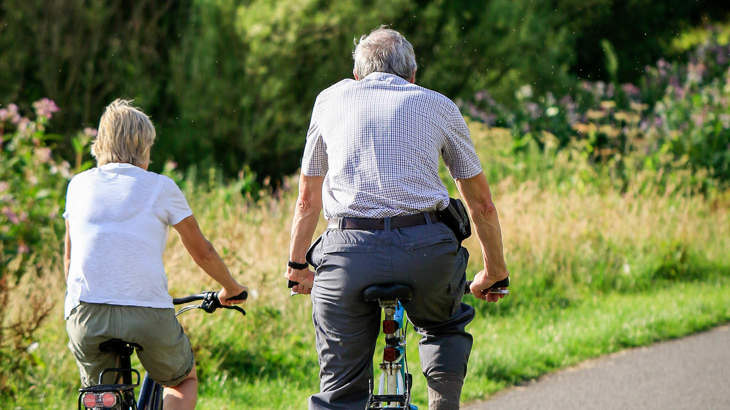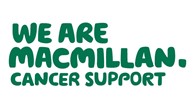One in two people in the UK will be diagnosed with some form of cancer in their lifetime. Whether you’re living with or after cancer, keeping active has huge benefits for your physical and mental health. So we’ve teamed up with Macmillan to give you all the information and tips you need to walk or cycle more.

Cycling and walking are two of the easiest ways you can keep fit and healthy when you’re living with cancer and afterwards in your recovery.
Every two minutes someone in the UK is diagnosed with cancer.
But being more active is a good way to reduce your chances of getting it.
It’s also important to keep fit and healthy when you’re living with cancer and afterwards in your recovery.
Regular physical activity is safe and can help you feel better in lots of ways.
And walking and cycling are two of the easiest ways you can build exercise into your routine.
So if you’re used to being active or you’re just getting started, we’ve got all the information and advice you need to get walking or cycling more.
Is it safe for me to exercise?
Macmillan says that people living with and after cancer should avoid being inactive.
And research shows that physical activity is safe during and after most cancer treatments.
How active you should be and what kind of exercise you can do depends on what stage you’re at with your treatment.
Have a chat with your doctor or specialist if you’re unsure.
Cycling and walking are low-impact activities. So they can be an easy way for you to start building up your fitness.
How much exercise is recommended?
The UK government recommends that all adults do 150 minutes of moderate activity every week.
This is where the exercise you’re doing makes you breathe fast but you can still talk.
So you could go for a 20 to 25-minute walk every day in the week.
Or you can do 75 minutes of vigorous activity a week. This includes the types of activities that make your heart beat fast.
That’s a brisk 15-minute bike ride for five days of the week.
And it’s the same for people who have or have had cancer.
But it’s important that you don’t overdo it.
Make sure you take your time and build your activity up to the recommended weekly levels.
The main goal is to try to spend less time sitting down, so break up your rest with short bursts of exercise.
Like a quick walk around the garden or a 10-minute easy bike ride through your local park.
Take a look at Macmillan’s guide to physical activity and cancer. It’s got lots of tips and ideas for ways you can keep fit.

Research shows that physical activity like cycling or walking is safe during and after most cancer treatments.
Getting started with walking or cycling
You may be a little nervous about starting to cycle or walk more, and that’s understandable.
But even just a short walk or a 5-minute cycle around the block is better than no exercise at all.
Why cycle or walk more?
Knowing the benefits of going for a quick cycle or walk can help keep you motivated.
Cycling and walking can:
- reduce stress and anxiety
- help boost your mood and fight depression
- lower your chances of developing other health problems like diabetes, asthma and heart disease
- build your muscle strength
- help you maintain a healthy weight.
And for some cancers, like breast cancer and bowel cancer, being active may also lower your risk of the cancer coming back.
Read more about why walking and cycling are great for your mental health.
How to start cycling
Starting to cycle for the first time or getting back into it after some time away can be daunting.
But there are lots of things you can do to make you feel a bit more comfortable.
Make sure your bike is the right size for you. This will make it much easier to control and will help keep you safe.
Start off gently. Do a few short rides and stay local.
That way you’ll be able to enjoy the benefits of cycling whilst allowing your muscles to get used to the riding position.
Remember that you can stop cycling and walk with your bike if you get too tired or need a break.
And invest in a good bike lock. Knowing your bicycle is safe and secure when you’re not using it will put your mind at ease.
Take a look at our guide to cycling for beginners for more tips and advice.

Low-impact exercise like walking or cycling can be enjoyed by everyone. And they’re both safe for those with bone-related cancers too.
Tips for exercising safely
Macmillan says that it’s usually safe to start doing some physical activity during and after your treatment.
But even if you regularly walked or cycled before you were diagnosed with cancer, you may need to be more careful now.
Make sure you:
- start slowly and build up the amount of activity you do bit by bit
- drink plenty of water during and afterwards
- wear sunscreen and protective clothing when you’re out in the sun
- don’t exercise if you feel unwell.
Low-impact exercise like walking or cycling can be enjoyed by everyone.
And they’re both safe for those with bone-related cancers too.
For more tips and guidance on when to avoid certain types of activity, take a look at Macmillan’s website.






